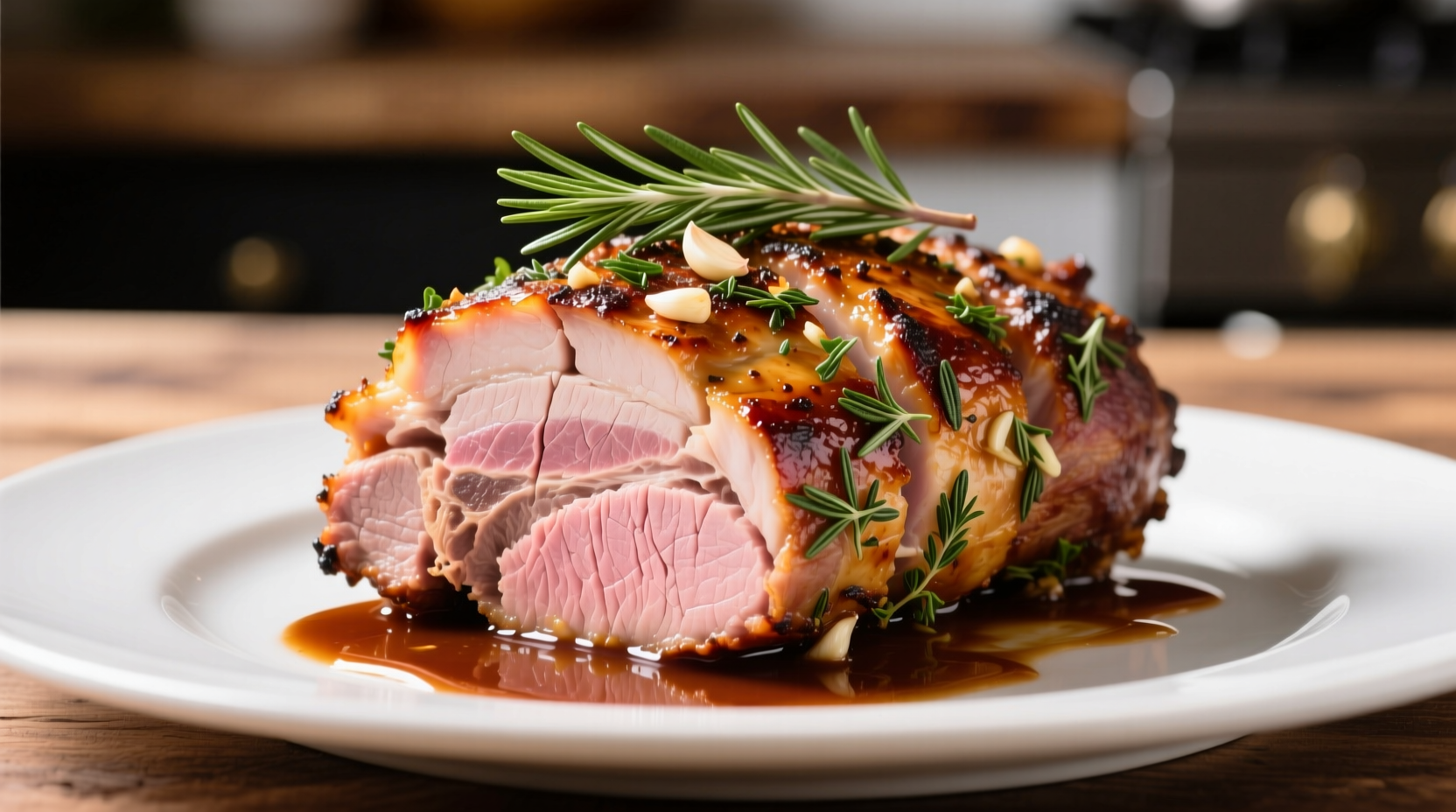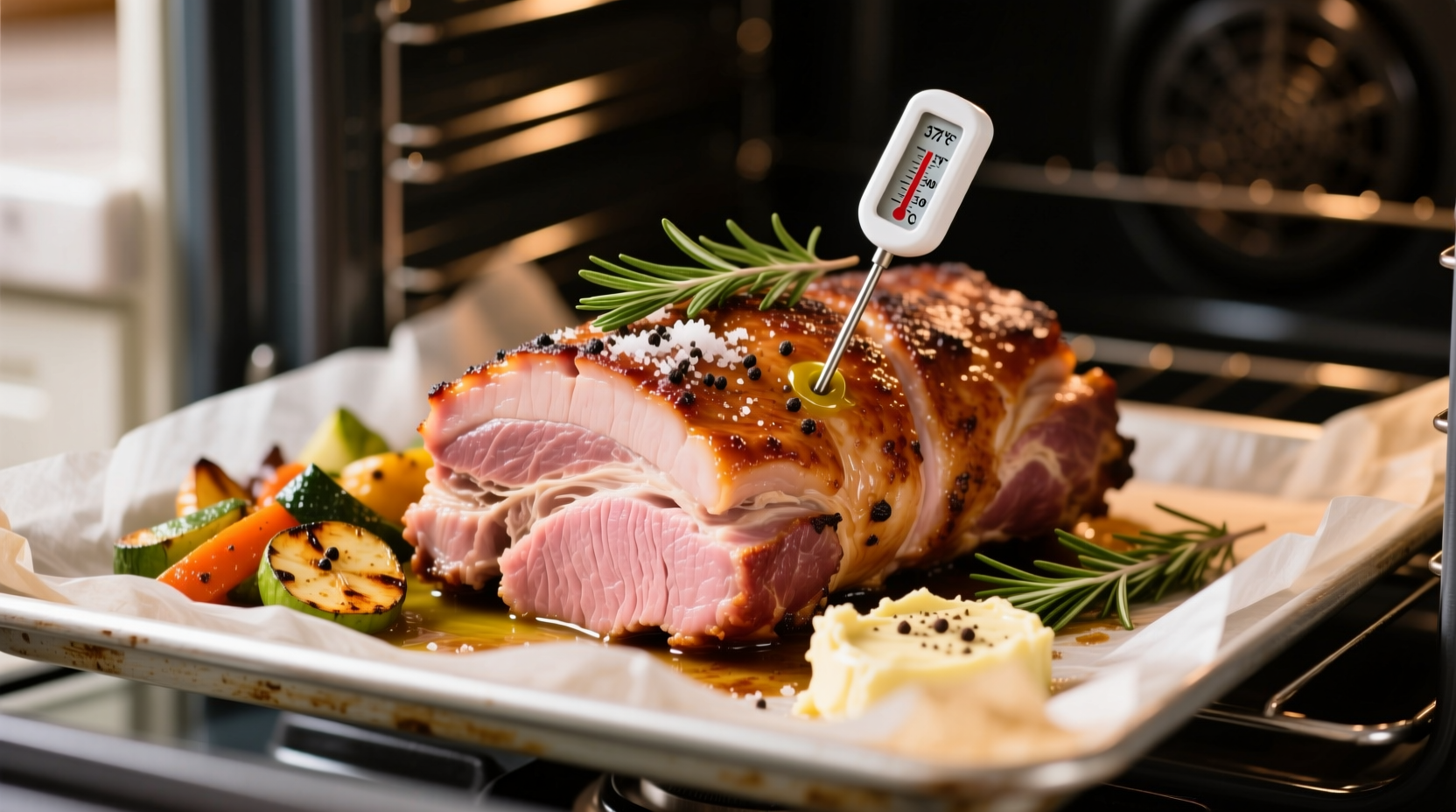The ideal cooking time for pork loin in the oven is 20-25 minutes per pound at 375°F (190°C), until it reaches an internal temperature of 145°F (63°C) followed by a 3-minute rest. This ensures perfectly cooked, juicy pork every time.
Mastering Oven-Cooked Pork Loin: Timing, Temperature, and Technique
Nothing compares to a perfectly roasted pork loin—tender, juicy, and bursting with flavor. But getting that ideal result requires precise timing and temperature control. Whether you're preparing a special dinner or weeknight meal, understanding the science behind cooking pork loin ensures consistent success.
Why Cooking Time Varies: Key Factors You Must Consider
While the standard guideline is 20-25 minutes per pound at 375°F, several critical factors affect your actual cooking time:
- Oven temperature accuracy - Many home ovens run hotter or cooler than displayed
- Pork loin starting temperature - Chilled versus room-temperature meat cooks differently
- Meat thickness and shape - Tapered ends cook faster than the center
- Rack position - Middle rack provides most even heat distribution
- Use of thermometer - The only reliable way to determine doneness
| Pork Loin Weight | Recommended Cooking Time at 375°F | Target Internal Temperature |
|---|---|---|
| 2-3 lbs (0.9-1.4 kg) | 40-75 minutes | 145°F (63°C) |
| 3-4 lbs (1.4-1.8 kg) | 60-100 minutes | 145°F (63°C) |
| 4-5 lbs (1.8-2.3 kg) | 80-125 minutes | 145°F (63°C) |
The Foolproof Cooking Process: From Prep to Plate
Preparation Essentials
Begin by patting your pork loin dry with paper towels—this critical step ensures proper browning. Season generously with salt and pepper at least 45 minutes before cooking, allowing the salt to penetrate the meat. For enhanced flavor, consider a simple rub of garlic powder, onion powder, and dried thyme.

Step-by-Step Cooking Method
- Preheat your oven to 375°F (190°C) with rack positioned in the center
- Sear the pork in a hot oven-safe skillet for 2-3 minutes per side until golden brown
- Transfer to oven and insert an oven-safe meat thermometer into the thickest part
- Cook until thermometer reads 140°F (60°C), checking after minimum recommended time
- Remove from oven when internal temperature reaches 140°F—remember it will continue rising
- Rest for 3-5 minutes before slicing to allow juices to redistribute
Food Safety Evolution: Understanding Modern Pork Cooking Standards
Many home cooks still follow outdated guidelines that recommended cooking pork to 160°F or higher. The USDA updated its recommendations in 2011 based on extensive research showing that 145°F with a 3-minute rest is both safe and produces superior texture.
Pre-2011: USDA recommended cooking pork to 160°F (71°C), often resulting in dry, overcooked meat
2011: USDA revised guidelines to 145°F (63°C) with 3-minute rest for whole muscle cuts like pork loin
Present: Modern food science confirms this temperature safely eliminates pathogens while preserving juiciness
This change reflects improved understanding of food safety and cooking science. According to the USDA Food Safety and Inspection Service, cooking pork loin to 145°F with a 3-minute rest effectively destroys Trichinella spiralis and other potential pathogens while maintaining optimal eating quality.
Troubleshooting Common Cooking Challenges
Problem: Uneven Cooking
Solution: Tie the loin with kitchen string at 1.5-inch intervals to maintain uniform shape. This prevents the thinner end from overcooking before the thicker center reaches proper temperature.
Problem: Dry or Tough Texture
Solution: Never skip the resting period. Cutting into pork immediately after cooking releases precious juices onto your cutting board instead of staying in the meat. For added insurance, try a reverse sear method by starting at a lower temperature (275°F) until the meat reaches 130°F, then finishing with a high-heat sear.
Problem: Inconsistent Oven Temperatures
Solution: Invest in an independent oven thermometer. Many home ovens have hot spots or inaccurate thermostats that can throw off your cooking time by 15-20%.
Advanced Techniques for Flavor Enhancement
While timing and temperature form the foundation, these professional techniques elevate your pork loin from good to exceptional:
- Dry brine: Salt the pork loin 12-24 hours before cooking for deeper seasoning and improved moisture retention
- Herb crust: Press fresh herbs like rosemary and thyme onto the surface before searing for aromatic complexity
- Temperature monitoring: Use a wireless probe thermometer for real-time tracking without opening the oven
- Resting environment: Place the cooked pork on a wire rack over a baking sheet during resting to prevent steaming
When to Adjust Standard Cooking Parameters
While 375°F is ideal for most situations, certain circumstances call for temperature adjustments:
- For thicker cuts (over 2 inches): Reduce to 350°F to prevent exterior overcooking
- For stuffed pork loin: Increase cooking time by 25% and ensure stuffing reaches 165°F
- For convection ovens: Reduce temperature by 25°F and check 15 minutes early
- For high-altitude cooking: Increase cooking time by 5-10% above 3,000 feet elevation
Remember that these are starting points—your specific oven and pork cut may require slight adjustments. The internal temperature remains your most reliable indicator of doneness.
Serving and Storage Recommendations
Slice pork loin against the grain into ¼ to ½ inch thick slices for maximum tenderness. Pair with roasted vegetables, apple sauce, or a simple pan gravy made from the drippings.
For leftovers, store cooled pork in an airtight container in the refrigerator for up to 4 days. Reheat gently in a covered dish with a splash of broth at 300°F until warmed through—never microwave, which dries out the meat.
Frequently Asked Questions
How do I know when pork loin is done without a thermometer?
While a thermometer is always recommended, you can use the touch test: properly cooked pork should feel firm but slightly yielding, similar to the fleshy part of your palm below the thumb when your hand is relaxed. However, this method is significantly less reliable than using a thermometer.
Can I cook frozen pork loin in the oven?
Yes, but increase cooking time by approximately 50% and check temperature 20 minutes before the expected finish time. Never cook frozen pork at high temperatures, as the exterior will overcook before the interior thaws. The USDA recommends cooking frozen meat at 325°F for more even results.
Why did my pork loin turn out dry despite following cooking times?
Dryness typically results from overcooking, skipping the resting period, or improper slicing. Pork loin has minimal fat content, so exceeding 145°F internal temperature causes significant moisture loss. Always use a reliable thermometer, rest for at least 3 minutes, and slice against the grain for optimal juiciness.
Should I cover pork loin with foil while cooking?
Covering with foil is generally unnecessary and prevents proper browning. However, if the exterior is browning too quickly before the interior reaches temperature, loosely tent with foil during the final third of cooking time. Never cover during the searing phase.
What's the difference between pork loin and pork tenderloin?
Pork loin comes from the back of the pig and is larger, thicker, and contains more fat. Pork tenderloin is a smaller, leaner cut from beneath the loin. Cooking times differ significantly—tenderloin typically requires 20-25 minutes at 400°F, while loin needs 20-25 minutes per pound at 375°F.











 浙公网安备
33010002000092号
浙公网安备
33010002000092号 浙B2-20120091-4
浙B2-20120091-4